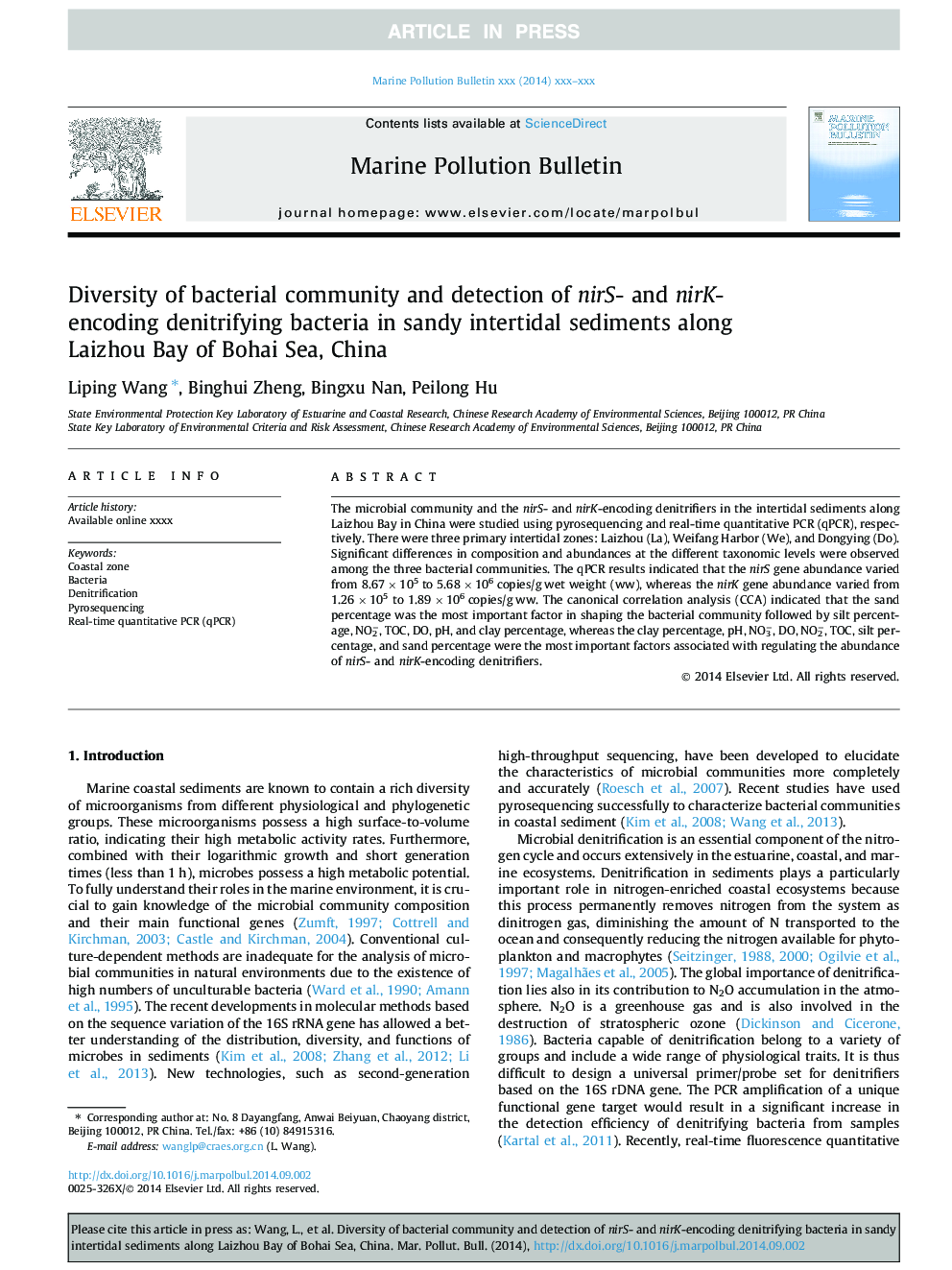| Article ID | Journal | Published Year | Pages | File Type |
|---|---|---|---|---|
| 6358290 | Marine Pollution Bulletin | 2014 | 9 Pages |
Abstract
The microbial community and the nirS- and nirK-encoding denitrifiers in the intertidal sediments along Laizhou Bay in China were studied using pyrosequencing and real-time quantitative PCR (qPCR), respectively. There were three primary intertidal zones: Laizhou (La), Weifang Harbor (We), and Dongying (Do). Significant differences in composition and abundances at the different taxonomic levels were observed among the three bacterial communities. The qPCR results indicated that the nirS gene abundance varied from 8.67 Ã 105 to 5.68 Ã 106 copies/g wet weight (ww), whereas the nirK gene abundance varied from 1.26 Ã 105 to 1.89 Ã 106 copies/g ww. The canonical correlation analysis (CCA) indicated that the sand percentage was the most important factor in shaping the bacterial community followed by silt percentage, NO2â, TOC, DO, pH, and clay percentage, whereas the clay percentage, pH, NO3â, DO, NO2â, TOC, silt percentage, and sand percentage were the most important factors associated with regulating the abundance of nirS- and nirK-encoding denitrifiers.
Related Topics
Physical Sciences and Engineering
Earth and Planetary Sciences
Oceanography
Authors
Liping Wang, Binghui Zheng, Bingxu Nan, Peilong Hu,
